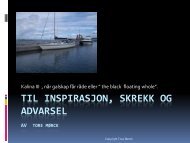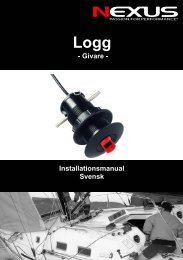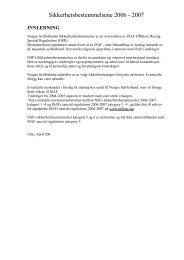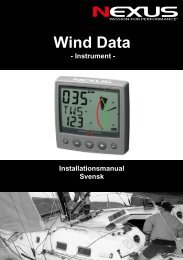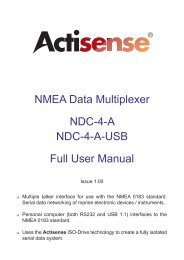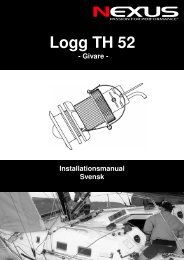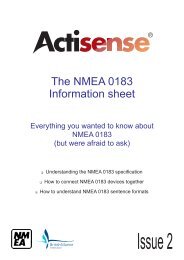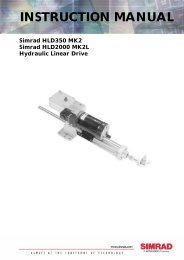Create successful ePaper yourself
Turn your PDF publications into a flip-book with our unique Google optimized e-Paper software.
5. FISH FINDERT-55.02 FF/T-50.02 FF/T-55.06 FF/T-50.06 FFThe Fish Finder consists of a high power transmitter, sensitive receiver and atransducer. The Fish Finder sends an electrical pulse to the transducer whichcontains an element that converts the pulse into acoustic (sound) wave which issent through the water. As this wave travels from the transducer to the bottom, itmay strike fish, structures, thermoclines (temperature changes in the water).When the wave strikes an object(s) a certain amount of the wave is reflected backto the transducer depending on the composition and shape of the object. Whenthe reflected wave is returned to the transducer it is converted into a voltage andis amplified by the receiver, processed and sent to the display. The speed of soundin water is roughly 4800 ft./sec, so the time lapse between the transmitted signaland the received echo can be measured and the distance to the object determined.Fig. 5 - Fish Finder working principle5.1 SETTING THE INTERNAL FISH FINDER ONThe internal Fish Finder driver is connected directly to the dedicated serial Port2.To switch the internal Fish Finder transmission On follow the procedure:[MENU] + "Advanced Options" + [ENTER] + "Input/Output" + [ENTER] +"Fish Finder" + [ENTER] + "On" + [ENTER]NOTEIt is not possible to connect any external Fish Finder unit to the chart plotter.5.2 UNDERSTANDING THE FISH FINDER PAGEThe display on chart plotters shows a history of time of the echoes received bythe transducer. The chart plotters have a menu that allows adjustments to receiversensitivity, depth range and scrolling speed of the Fish Finder display.<strong>User</strong> <strong>Manual</strong>73




